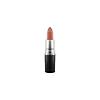What's inside
What's inside
 Key Ingredients
Key Ingredients

 Benefits
Benefits

 Concerns
Concerns

 Ingredients Side-by-side
Ingredients Side-by-side

Polyglyceryl-2 Triisostearate
EmulsifyingEthylhexyl Palmitate
EmollientBis-Diglyceryl Polyacyladipate-2
EmollientSynthetic Wax
AbrasiveSilica
AbrasiveEuphorbia Cerifera Wax
Squalane
EmollientIsononyl Isononanoate
EmollientJojoba Esters
EmollientCaprylic/Capric Triglyceride
MaskingHydrogenated Polycyclopentadiene
Microcrystalline Wax
Emulsion StabilisingOryza Sativa Starch
AbsorbentHelianthus Annuus Seed Wax
Skin ConditioningSclerocarya Birrea Seed Oil
HumectantTocopheryl Acetate
AntioxidantParfum
MaskingMica
Cosmetic ColorantPhenoxyethanol
PreservativeStearalkonium Hectorite
Gel FormingCaprylyl Glycol
EmollientAcacia Decurrens Flower Wax
EmollientPolyhydroxystearic Acid
EmulsifyingLecithin
EmollientPolyglycerin-3
HumectantPropylene Carbonate
SolventPolyglyceryl-3 Polyricinoleate
EmulsifyingIsostearic Acid
CleansingIsopropyl Myristate
EmollientTriethoxycaprylylsilane
Polyglyceryl-2 Triisostearate, Ethylhexyl Palmitate, Bis-Diglyceryl Polyacyladipate-2, Synthetic Wax, Silica, Euphorbia Cerifera Wax, Squalane, Isononyl Isononanoate, Jojoba Esters, Caprylic/Capric Triglyceride, Hydrogenated Polycyclopentadiene, Microcrystalline Wax, Oryza Sativa Starch, Helianthus Annuus Seed Wax, Sclerocarya Birrea Seed Oil, Tocopheryl Acetate, Parfum, Mica, Phenoxyethanol, Stearalkonium Hectorite, Caprylyl Glycol, Acacia Decurrens Flower Wax, Polyhydroxystearic Acid, Lecithin, Polyglycerin-3, Propylene Carbonate, Polyglyceryl-3 Polyricinoleate, Isostearic Acid, Isopropyl Myristate, Triethoxycaprylylsilane
Octyldodecanol
EmollientRicinus Communis Seed Oil
MaskingSilica
AbrasiveTricaprylyl Citrate
EmollientOzokerite
Emulsion StabilisingIsononyl Isononanoate
EmollientParaffin
PerfumingPhenyl Trimethicone
Skin ConditioningMicrocrystalline Wax
Emulsion StabilisingEthylhexyl Palmitate
EmollientCaprylic/Capric Triglyceride
MaskingCopernicia Cerifera Wax
Ascorbyl Palmitate
AntioxidantTocopherol
AntioxidantStearyl Stearoyl Stearate
EmollientVanillin
MaskingBHT
AntioxidantMica
Cosmetic ColorantCI 77891
Cosmetic ColorantCI 77491
Cosmetic ColorantCI 77492
Cosmetic ColorantCI 77499
Cosmetic ColorantCI 42090
Cosmetic ColorantCI 75470
Cosmetic ColorantCI 15850
Cosmetic ColorantCI 45380
Cosmetic ColorantCI 45410
Cosmetic ColorantCI 73360
Cosmetic ColorantCI 17200
Cosmetic ColorantCI 19140
Cosmetic ColorantCI 15985
Cosmetic ColorantOctyldodecanol, Ricinus Communis Seed Oil, Silica, Tricaprylyl Citrate, Ozokerite, Isononyl Isononanoate, Paraffin, Phenyl Trimethicone, Microcrystalline Wax, Ethylhexyl Palmitate, Caprylic/Capric Triglyceride, Copernicia Cerifera Wax, Ascorbyl Palmitate, Tocopherol, Stearyl Stearoyl Stearate, Vanillin, BHT, Mica, CI 77891, CI 77491, CI 77492, CI 77499, CI 42090, CI 75470, CI 15850, CI 45380, CI 45410, CI 73360, CI 17200, CI 19140, CI 15985
 Reviews
Reviews

Ingredients Explained
These ingredients are found in both products.
Ingredients higher up in an ingredient list are typically present in a larger amount.
This ingredient is an emollient, solvent, and texture enhancer. It is considered a skin-softener by helping the skin prevent moisture loss.
It helps thicken a product's formula and makes it easier to spread by dissolving clumping compounds.
Caprylic Triglyceride is made by combining glycerin with coconut oil, forming a clear liquid.
While there is an assumption Caprylic Triglyceride can clog pores due to it being derived from coconut oil, there is no research supporting this.
Learn more about Caprylic/Capric TriglycerideEthylhexyl Palmitate, also known as octyl palmitate, is created from 2-ethylhexyl alcohol and palmitic acid. It is a fatty acid ester.
The fatty acid content of Ethylhexyl Palmitate makes it an emollient. Emollients help soften and hydrate your skin by trapping moisture within.
Ethylhexyl Palmitate is also used to help improve the texture of cosmetics. It helps other ingredient dissolve in products and help disperse ingredients more evenly.
You'll likely find this ingredient in sunscreen, as it is often used to mix UV-blocking ingredients such as avobenzone and ethylhexyl triazone.
It can also help stabilize the fragrances in a product as a fragrance fixative.
Ethylhexyl Palmitate can be used to substitute mineral oil.
Due to its high fatty acid content, it may not be fungal-acne safe.
Learn more about Ethylhexyl PalmitateIsononyl Isononanoate is a synthetic skin-conditioner and texture enhancer. It is created from nonanoic acid, a fatty acid found in cocoa and lavender oil.
As an emollient, Isononyl Isononanoate helps keep your skin soft and smooth. This is because emollients create a barrier on the skin to trap moisture in.
Isononyl Isononanoate helps give products a velvet feel and improves spreadability.
Learn more about Isononyl IsononanoateMica is a naturally occurring mineral used to add shimmer and color in cosmetics. It can also help improve the texture of a product or give it an opaque, white/silver color.
Serecite is the name for very fine but ragged grains of mica.
This ingredient is often coated with metal oxides like titanium dioxide. Trace amounts of heavy metals may be found in mica, but these metals are not harmful in our personal products.
Mica has been used since prehistoric times throughout the world. Ancient Egyptian, Indian, Greek, Roman, Aztec, and Chinese civilizations have used mica.
Learn more about MicaMicrocrystalline Wax is created by de-oiling petroleum. It is highly refined and purified before being added to cosmetics.
Microcrystalline Wax is used to enhance the texture and create even consistency. It helps stabilize a product by preventing ingredients from separating.
Silica, also known as silicon dioxide, is a naturally occurring mineral. It is used as a fine, spherical, and porous powder in cosmetics.
Though it has exfoliant properties, the function of silica varies depending on the product.
The unique structure of silica enhances the spreadability and adds smoothness, making it a great texture enhancer.
It is also used as an active carrier, emulsifier, and mattifier due to its ability to absorb excess oil.
In some products, tiny microneedles called spicules are made from silica or hydrolyzed sponge. When you rub them in, they lightly polish away dead skin layers and enhance the penetration of active ingredients.
Learn more about Silica